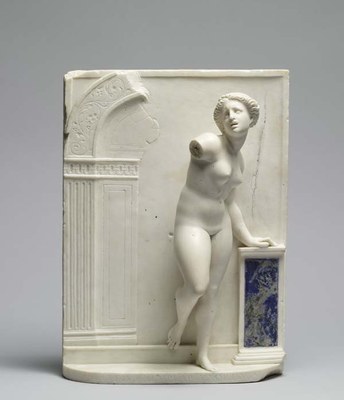The Epigrammatic Gaze: The Italian Rediscovery of the Planudean Anthology and the Transformation of the Renaissance Culture of Viewing Art
DE >>
Recent decades have seen a steady surge of critical interest in the relations between the “sister arts” in Renaissance Italy, and in the exemplary role that ancient sources had in how artists and writers from that historical context understood and experimented with the interaction of visual and verbal media. In this vein, scholars have paid significant attention to the receptiveness of early modern Italian poets to the encomiastic topoi on images disseminated in the Anthologia Planudea, a florilegium of Hellenic and Hellenistic epigrams that, from the second half of the 15th century, circulated extensively and gave rise to myriad translations and imitations in the Peninsula.  Some consideration has also been given to the relevance of that collection for clarifying the iconographies of many Renaissance artworks. However, the art-historical import of the rediscovery, in early modern Italy, of that unique literary gateway to retrieving the visual cultures of Greek antiquity remains largely undetected. The present project sets out to assess, for the first time, the centrality of the Planudea as a source for a number of pivotal ways in which Italian literati verbalized the experience of looking at, evaluating, and interpreting images. At the same time, the study aims at illuminating how the deep transformations at the discursive level brought about by the appropriation of the Anthology mirrored the challenges posed by an evolving artistic landscape. Research will focus on a wide range of early modern texts on art that were produced in numerous cultural centers of the Peninsula and span the nearly 150-year period of greatest popularity of the florilegium (ca. 1470‒1610). By means of a strongly interdisciplinary approach, it will interrogate these materials – including numerous Italian and Neolatin poems, in part previously unpublished, on the creations of such artists as Vittore Carpaccio, Dosso Dossi, and Baccio Bandinelli, as well as treatises such as Pomponius Gauricus’s De Sculptura (1504) – to understand the ways in which the reception of the Planudea intersected with new modes of production, presentation and consumption of artworks. By doing this, the project will reconstruct a most meaningful, and largely unexplored, aspect of the interchange between literary and artistic cultures in Renaissance Italy, one in which words and images informed each other in a fluid, two-way process of cross-fertilization.
Some consideration has also been given to the relevance of that collection for clarifying the iconographies of many Renaissance artworks. However, the art-historical import of the rediscovery, in early modern Italy, of that unique literary gateway to retrieving the visual cultures of Greek antiquity remains largely undetected. The present project sets out to assess, for the first time, the centrality of the Planudea as a source for a number of pivotal ways in which Italian literati verbalized the experience of looking at, evaluating, and interpreting images. At the same time, the study aims at illuminating how the deep transformations at the discursive level brought about by the appropriation of the Anthology mirrored the challenges posed by an evolving artistic landscape. Research will focus on a wide range of early modern texts on art that were produced in numerous cultural centers of the Peninsula and span the nearly 150-year period of greatest popularity of the florilegium (ca. 1470‒1610). By means of a strongly interdisciplinary approach, it will interrogate these materials – including numerous Italian and Neolatin poems, in part previously unpublished, on the creations of such artists as Vittore Carpaccio, Dosso Dossi, and Baccio Bandinelli, as well as treatises such as Pomponius Gauricus’s De Sculptura (1504) – to understand the ways in which the reception of the Planudea intersected with new modes of production, presentation and consumption of artworks. By doing this, the project will reconstruct a most meaningful, and largely unexplored, aspect of the interchange between literary and artistic cultures in Renaissance Italy, one in which words and images informed each other in a fluid, two-way process of cross-fertilization.
End of the project: 30.04.2023
Proof of reproduction: Artist of the circle of Giovan Maria Mosca, Lucretia, ca. 1520. Marble 34.5x24 cm. (Baltimore, Walters Art Gallery) (Wikimedia Common Licence)
